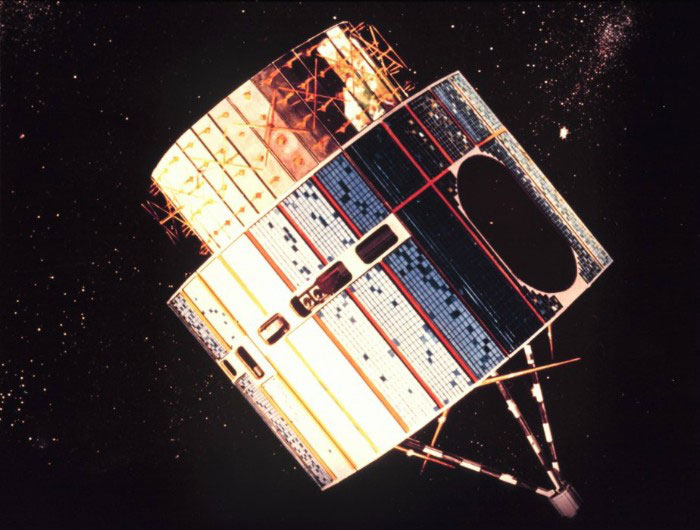 You read my blog. If you’re my friend on Facebook, you probably see my Facebook updates, and photos. But I’m at the South Pole, at one of the most isolated, desolate, harsh spots on the planet. So how do I get internet with which to upload and post all of this content? The answer: Satellites.
You read my blog. If you’re my friend on Facebook, you probably see my Facebook updates, and photos. But I’m at the South Pole, at one of the most isolated, desolate, harsh spots on the planet. So how do I get internet with which to upload and post all of this content? The answer: Satellites.
Here at the Amundsen-Scott South Pole Station, we use a variety of three different satellite networks to get data and voice connectivity to the rest of the world.
Since we’re at the South Pole, we either don’t have a constant view of a data-relay satellite, or if there is a Satellite in view, there’s not always a continuous allotment of bandwidth for us.
To deal with this, we use three separate satellite networks, to provide intermittent connectivity throughout the day.
During the day, we get our longest continuous block of internet access from the least likely place – the GOES-3 Weather Satellite, originally launched into orbit in 1978. So yep, those facebook posts, and even this blog post are bouncing off a piece of hardware that’s over 30 years old.
GOES 3, known as GOES-C before becoming operational, is an American geostationary weather and communications satellite. It was originally built for the National Oceanic and Atmospheric Administration as part of the Geostationary Operational Environmental Satellite system,[3] and was launched in June 1978.[4] It is positioned in geostationary orbit, from where it was initially used for weather forecasting in the United States. Since ceasing to function as a weather satellite in 1989, it has been used as a communications satellite, and having spent over thirty one years in operation, it is one of the oldest functioning satellites in orbit.
Since our GOES link is very very old, the bandwidth it’s able to provide us is low – from what I hear, we get around 1.5megabits up and down, which is shared throughout the entire station – both for voice as well as data. Traffic gets prioritized, so voice goes through smoothly, then higher priority data like scientific payloads, and then finally normal web surfing. The experience is definitely a bit frustrating to use, but considering our spot here at the south pole, it’s incredible that we get anything at all.
Our other two satellite networks in use are the TDRSS Satellite and the Skynet network. More on those later, after I get a bit more interesting factoids from our satellite comms engineers downstairs.
**Update 2012-12-13**
Another great addition from Antarctic veteran Bill Spindler, regarding the comms situation here. Thanks Bill!
Being at Pole in my opinion was a lot more fun back in the old days of 1976-77 when we did NOT have communications satellites, the internet had not yet been invented, all communications went out by Navy HF teletype that had to get signed off by the station manager and got read by NSF and everyone along the way. Oh, yeah, I was the station manager, back then it used to be fun as we were well and truly isolated, I talked to my boss in Anaheim (where the contractor office was then) about once every six weeks on ham radio, and of course you can’t talk business on ham radio!
Okay, we 21 winterovers from 1977 had a reunion in Boulder in June 2000…well, on midwinters day to be exact…and there was 100% attendance…something that has not happened with any other Polie winterover group before or since. (Well, Gary Rosenberger our NOAA tech didn’t have a choice about showing up…he was killed in a motorcycle accident in NZ the week after we left the ice.
The rest of us are still in contact; we had another reunion a few years later that most folks attended. And if you haven’t found it, my 1977 winter documentation is here…
https://www.southpolestation.com/poleindex.htmlremember I scanned all of my slides back in 1999 when the internet was dialup so I had to keep the images small…
Back to the satellites…in 1977 there was an ATS-3 satellite–a then-old weather satellite that had quit working except for communications…people could make phone calls on it, one at a time. For science. So our winterover friends at Palmer and Siple could call home…but we at Pole could not. As for current documentation, here’s my satellite coverage–the new Skynet:
https://www.southpolestation.com/news/news.html#skynetand other satellite trivia:
https://www.southpolestation.com/news/news.html#comm
Update – see more of the Golf Ball, which houses the GOES satellite link hardware here.



Comments
4 responses to “Bouncing Facebook Likes Off The 1978 GOES-3 Weather Satellite”
[…] Yes, this is addressed here. […]
I wintered over in the 1977-1978 season, after Bill, and looked after the technical side of the weather station. Communications for us was similar, and the life-line for me back to New Zealand was the Ham Radio Station KC4AAA – probably kindled my love of ham radio. Otherwise communications were by letter in the summer or the matter had to just wait! Certainly wouldn’t do in todays’ age eh? But I agree with Bill, that if you took all the difficulties away, then what would be left of the experience? “Went there, got the tee-shirt, and posted it straight on Facebook”. Instead, I have a large number of the best memories of my life…Kevin Bisset
[…] desert, Antarctica, or the bottom of the sea. Telecommunications in these isolated places can be very limited, and you have to spend your days avoiding death and looking into microscopes, so for all intents […]
[…] desert, Antarctica, or the bottom of the sea. Telecommunications in these isolated places can be very limited, and you have to spend your days avoiding death and looking into microscopes, so for all intents […]